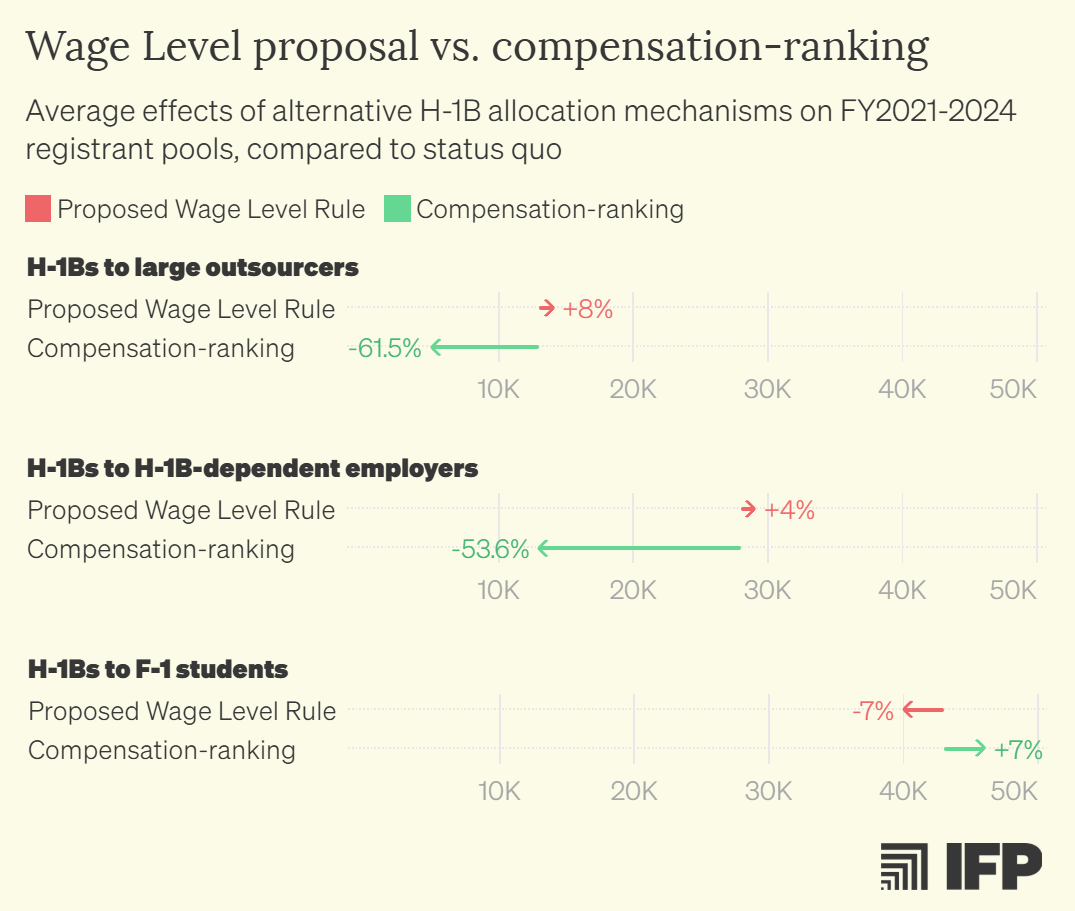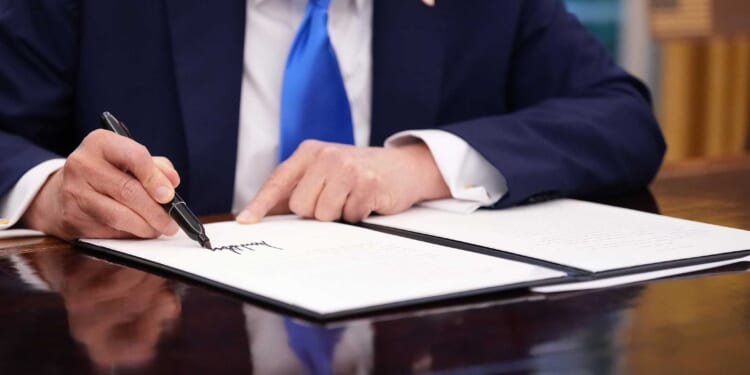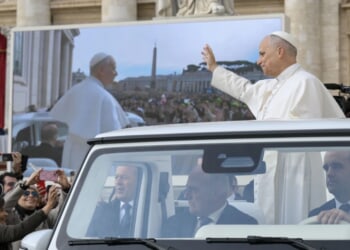For more than a decade, critics of America’s immigration system have noted how easy it is to game the flagship high-skilled immigration program, the H-1B. Critics from across the spectrum say that the H-1B lottery system makes it hard for normal businesses to plan ahead, that employers don’t actually have to pay above-average wages, and that a disproportionate number of the visas get snapped up by outsourcing firms that spam the lottery with multiple entries.
The critics are right. On paper, H-1B visas are meant to attract the world’s best and brightest. In practice, many go to outsourcing firms importing workers with only middling skills.
Last week, the Trump administration announced major upcoming changes to the H-1B: a $100,000 fee for new petitions, and a new prioritization scheme from the Department of Homeland Security for allocating lottery slots to higher-skilled talent. On paper, the reforms seem to fix the problems the H-1B’s critics have identified.
In reality, they don’t. A loophole in the $100,000 fee, combined with a poorly designed lottery update, will make the system worse. The changes barely raise the skill level of recipients, give outsourcers an advantage, and make it harder to hold on to top graduates from U.S. universities.
The administration is right to want tougher standards for H-1B use. But to curb outsourcing firms and reserve visas for the most skilled immigrants, it must rethink the details.
Start with the $100,000 fee, which is more bark than bite. In theory, raising the cost of visas should discourage employers from using the H-1B for lower-skilled work. But the fee has a massive loophole. Under current law, workers in the United States on another visa can simply change to an H-1B and avoid the $100,000 payment. Eighty percent of the people in the H-1B lottery fall into this category, usually being here on student visas. Once employers have an incentive to get people here first on another visa, that number will rise.
Moreover, many of the outsourcers that regularly abuse the H-1B lottery—firms like Infosys, Cognizant, Tech Mahindra, Wipro, and Tata—are multinationals with access to L visas, which can be used to transfer workers from a foreign office to an American one. Right now, those companies can simply bring people to the U.S. on Ls, and then transition them to an H-1B, avoiding the fee. If the fee won’t apply to the vast majority of workers vying for H-1B slots, it won’t meaningfully deter system abuse.
The other major change is to the H-1B lottery itself. In a typical year, businesses file more than 300,000 applications for the 85,000 visas available, which the government distributes at random. The new rule would weight that lottery by “Wage Levels,” a pre-existing Department of Labor categorization system meant to reflect seniority within a given occupation.
In this system, a job requiring decades of experience is classified as Wage Level 4, while an entry-level position falls under Wage Level 1. Workers paid at Level 4 would get four chances in the lottery; Level 3, three chances; and so on. In theory, the administration argues, this should raise the average experience level of H-1B recipients.
But Wage Levels aren’t the same as actual wages. The Labor Department defines them relative to others in the same occupation, so the rule doesn’t favor higher-skilled jobs—only more experienced workers within a given field. That means an experienced acupuncturist earning $40,000 would be prioritized over a newly minted Ph.D. AI scientist with a $280,000 offer.

What the new rule does, in effect, is add a veneer of rigor to the existing system, while preserving the advantage for outsourcers and other importers of lower-skilled labor. By focusing only on hierarchy within an occupation, it shifts visas toward fields with large pools of mid-career foreign-born candidates—like IT—rather than toward jobs that demand greater skill. A rational system would prioritize AI scientists over tech support, surgeons over acupuncturists, and research managers over social workers.
As strange as it may sound, outsourcers will get more visas under the new rule. These firms flood the H-1B lottery with registrations instead of recruiting top talent, then farm out the visas they win to other companies on contract. The workers they supply are not likely to be high-value and tend to be paid far less than other H-1B workers. Nonetheless, under the Department of Labor’s definitions, the outsourcers’ applicants qualify in higher Wage Levels, because their H-1B workers are older and further on in their careers. In a recent report, we calculated that under the proposed rule, the large outsourcers would get 8 percent more of the H-1B slots than they currently do.
When employers can pay less than the median American’s salary to an H-1B worker, it’s no wonder that many believe the program undercuts wages. Now, the employers can do so with DOL’s blessing–an official certification that they are paying the highest possible “Wage Level.” So much for protecting American workers.
Any changes to the lottery should weight visa awards on the actual salaries promised to H-1B workers, not a gameable construct like Wage Levels. To ensure New York and the Bay Area don’t get an unfair advantage, the ranking can adjust salaries by geography to account for different costs of living.
We don’t agree with hard-core restrictionists on many immigration questions. We think foreign STEM students are critical to American R&D dominance—a position backed by the data. But when debate flared in January over the H-1B program, it seemed obvious that everyone could agree: the system should not be a tool for employers who pay low wages or game the rules.
The Trump administration has a rare chance to overhaul the H-1B. It could shut out outsourcing firms, raise the skill level of immigrant workers, give American businesses more certainty about when they can hire abroad, and ensure the program doesn’t depress U.S. wages. But to achieve that, the reforms must be done right.
Photo by Andrew Harnik/Getty Images

















